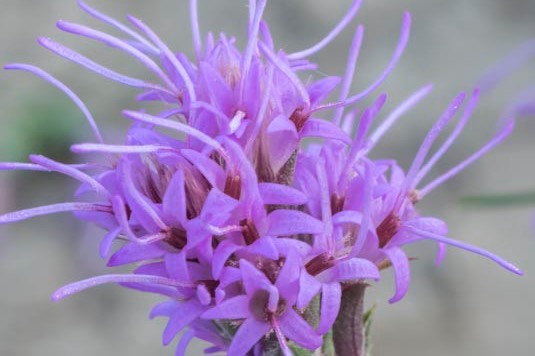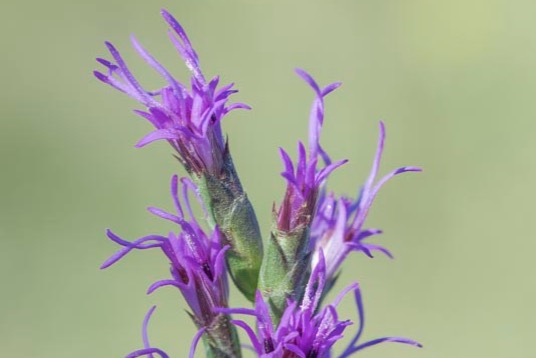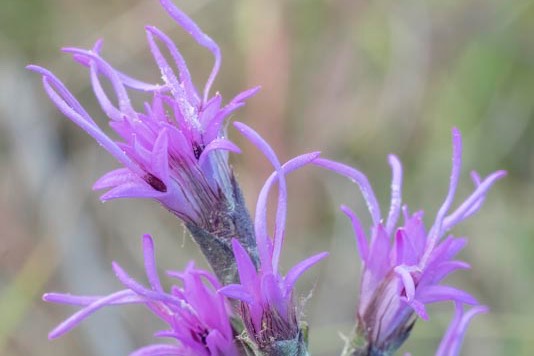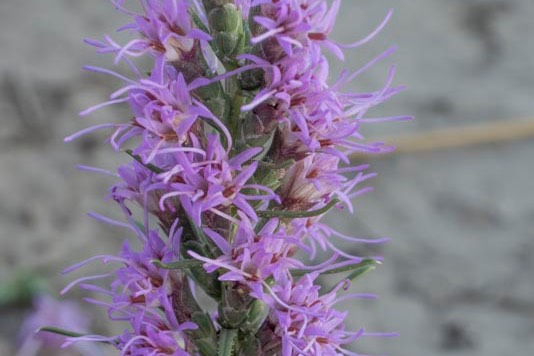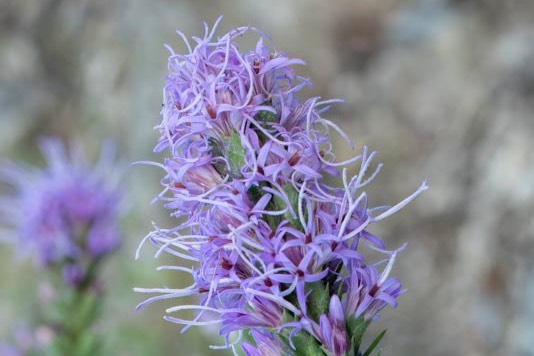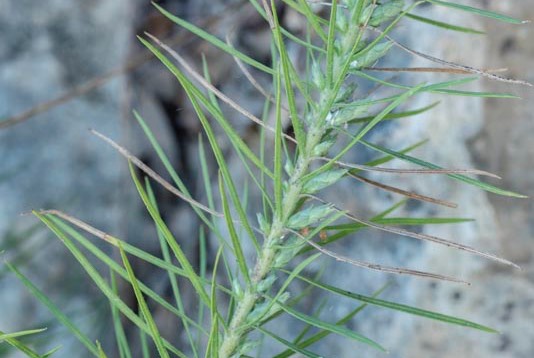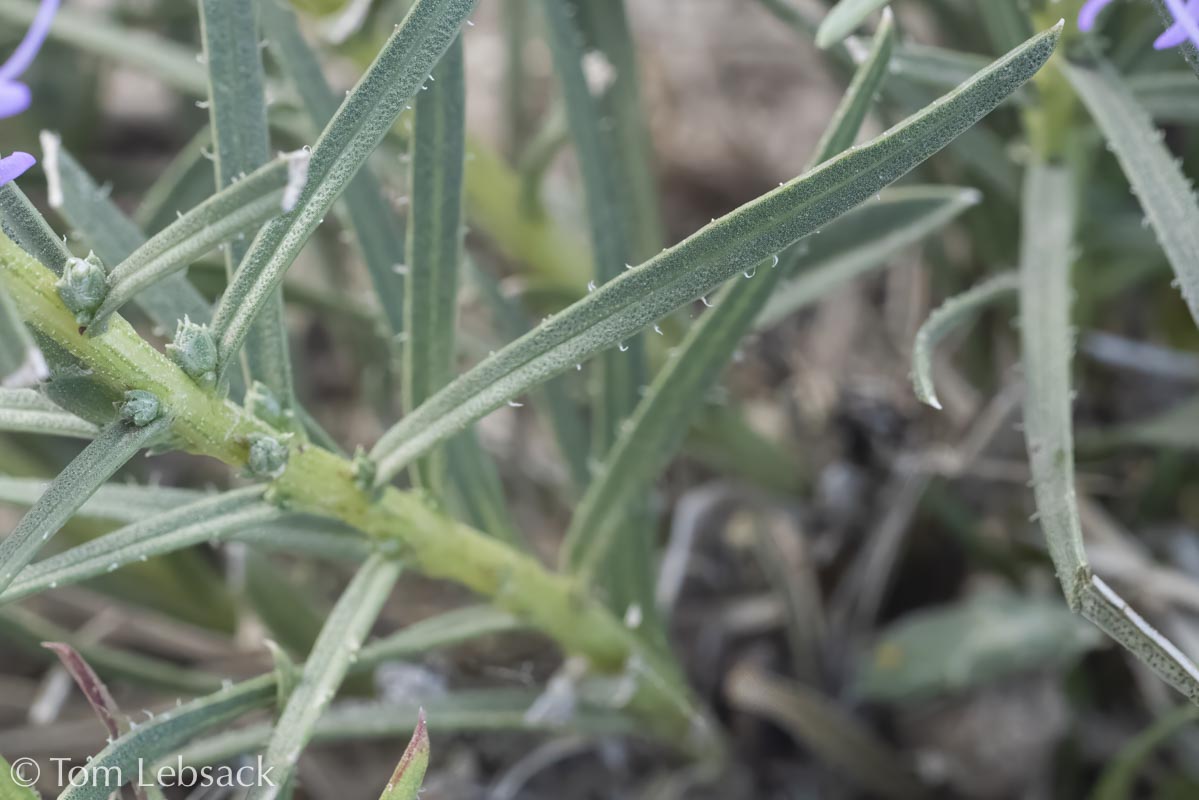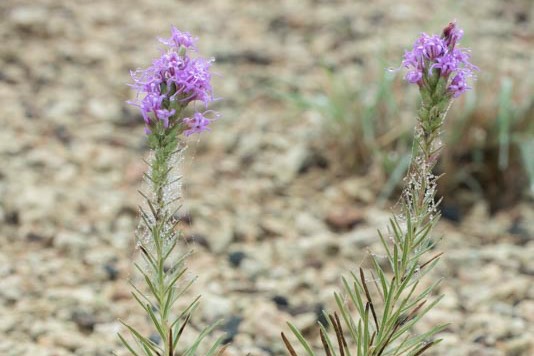Texas Wildbuds
Liatris punctata
(Dotted Gayfeather)
| Scientific Name | Liatris punctata (Liatris mucronata) | USDA PLANTS Symbol | LIPU |
| Common Name | Dotted Gayfeather, Dotted Blazing Star | ITIS Taxonomic Serial No. | 37936 |
| Family | Asteraceae (Sunflower) | SEINet Reference |
Click Here |
| Description | Habitat: Dry sandy or calcareous, rocky soils; prairies, open areas. Plant: Erect perennial with a few to numerous, smooth, stiff, unbranched stems, 1 to 3 ft. tall, growing in wide-spreading clump. Leaves: Alternate, narrowly linear, sessile; lower leaves 2 to 4 inches long and less than 1/4-inch wide, reducing size gradually upward becoming short bracts near the inflorescence; surfaces are gland-dotted (punctate), margins usually ciliate. Inflorescence: Flower heads in a dense spike 3 to 24 inches long, each head less than 3/4-inch long with 3 to 6 flowers; flowers with leafy phyllaries with pointed tips; no ray flowers; disk florets with 4 or 5 purple or pink lobes and protruding white style divided into two branches. Bloom Period: August to December. References: "Manual of the Vascular Plants of Texas" by Correll and Johnston, "Wildflowers of Texas" by Michael Eason, L. mucronata in "Wildflowers of Texas" by Geyata Ajilvsgi and "Wildflowers of the Texas Hill Country" by Marshall Enquist, and Kansas Wildflowers and Grasses. Note: There are two dominant varieties of L. punctata in Texas, mucronata and punctata. The difference are the shape of the corm (bulb), mucronata being more or less spherical and punctata being elongated. Also, punctata is more common in the western 2/3 of the state and into the Panhandle whereas mucronata is found in the central part of the state (eastern part of the Hill Country) and further east. Differences in phyllary shape (mucronate vs. apicular tips) is less definitive. The plants shown here could be either variety. |
BONAP Distribution Map Map Color Key Map Color Key |
Texas Status: Native |
Banner photo of Castilleja indivisa and Lupinus ssp. taken along FM 1323 north of Johnson City, Blanco County
© Tom Lebsack 2025
Every attempt is made to provide accurate, up-to-date, and relevant information, but the completeness or accuracy of any information presented on this website cannot be guaranteed. I use authoritative references to insure high standards of accuracy and review and update the information frequently.
